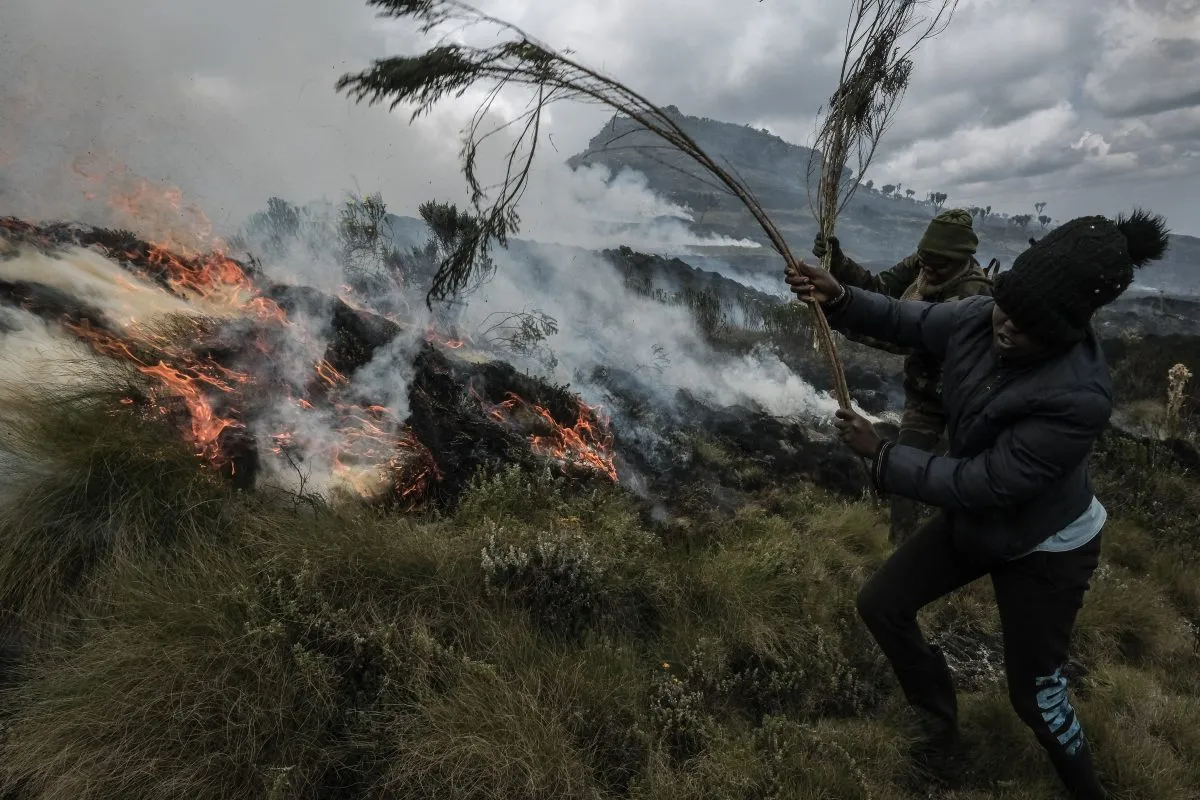Africa’s green lungs – the tropical rainforests that sequester carbon, provide livelihoods for millions and are home to unique wildlife and plant ecosystems – are under unprecedented threat. Global forest loss surged to record highs in 2024, driven by a catastrophic rise in fires, according to satellite analysis from the University of Maryland’s Global Land Analysis and Discovery Lab (GLAD Lab), made available on the World Resources Institute’s (WRI) Global Forest Watch platform.
Around the world, loss of tropical primary forests – forest that has not been significantly impacted by human activities like logging – reached 6.7 million hectares, or 18 football fields every minute, nearly double the loss in 2023. For the first time, fires – not agriculture – were the leading cause of global tropical primary forest loss, accounting for nearly half of all destruction, compared to 20% in recent years.
Devastating fires
The Republic of the Congo saw levels of primary forest loss surge by 150% in 2024 compared to the previous year. Fires, sparked by unusually hot and dry conditions, caused 45% of the country’s 60,000-hectare loss. Matt Hansen, professor at the University of Maryland and co-director at the GLAD Lab, said the loss from fires was “outside of current policy frameworks or intervention capabilities and will severely test our ability to maintain intact forests within a warming climate.”
Investment in fire prevention, early warning systems, rapid response equipment, enforcement measures, education on fire-free preparation of agricultural land, and prescribed burns to reduce flammability are needed to combat future fires, WRI researchers Elizabeth Goldman, Sarah Carter and Michelle Sims say.
“While fires are naturally occurring in some ecosystems, in tropical forests they are almost entirely human-caused, often started to clear land for agriculture and spreading out of control in nearby forests,” they add.
Conflict conflagration
Human activity is destructive in other ways. In the Democratic Republic of the Congo (DRC), which lost 590,000 hectares in 2024 – its highest loss on record – just 13% of the annual total loss came from fires, compared to 87% for other causes.
The Rwanda-backed invasion of the eastern DRC led to floods of displaced people who were forced to clear forest for their survival. Other causes include the removal of timber to make charcoal, forest clearing for smallholder agriculture and shifting cultivation – where forests are cleared for temporary planting and then left fallow for a period while forests regrow.
Cash crop introduction means the scale of clearing is increasing and fallow periods are shorter. Worryingly, “forests are not regrowing, and the cultivation is becoming more permanent.”
No easy solutions
Teodyl Nkuintchua, Congo Basin strategy and engagement lead at WRI Africa, acknowledged the scale of the challenge. “The high rates of forest loss in the DRC reflect the tough realities our communities are facing – poverty, conflict and a deep reliance on forests for survival. There’s no silver bullet, but we won’t change the current trajectory until people across the Congo Basin are fully empowered to lead conservation efforts that also support their rural economies.”
Ever-increasing deforestation is not inevitable – the report found that forest loss was stable in Gabon, Equatorial Guinea and even conflict-wracked Central African Republic. The DRC’s Kivu-Kinshasa Green Corridor, home to 31 million people, saw significant loss in 2024. It could protect over 540,000 square kilometres of forest and promote sustainable development. Carbon credit schemes can help countries to monetise the protection of forests, while commodity production can be decoupled from forest loss, researchers say.
With the loss of tropical primary forests last year alone causing 3.1 gigatonnes of greenhouse gas emissions, equivalent to slightly more than the annual carbon dioxide emissions from India’s fossil fuel use – the natural and human conflagrations driving the trend must be urgently addressed.
Want to continue reading? Subscribe today.
You've read all your free articles for this month! Subscribe now to enjoy full access to our content.
Digital Monthly
£8.00 / month
Receive full unlimited access to our articles, opinions, podcasts and more.
Digital Yearly
£70.00 / year
Our best value offer - save £26 and gain access to all of our digital content for an entire year!

 Sign in with Google
Sign in with Google 



